

South Africa
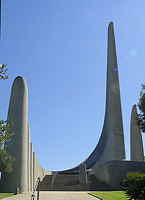

Afrikaans
South Africa is one of the few ex-Dutch colonies where the language has remained that of the mother country. Okay, after a fashion - we can read it fine but hardly understand it when spoken. In Indonesia, it's all Bahasa Indonesia. In Curaçao, it is slowly, if maybe not surely, being replaced by Papiamentu. In Surinam which has been on its own for decennia now, weirdly it's still in use.
An old favorite book of mine, Sex in History by Gordon Rattray Taylor (no relation) makes this interesting case: Henry VIII had contracted syphilis (let's face it, he asked for it). Therefore, he was in regular need of fresh wives, and therefore he broke with the catholic church so as to get divorces. This caused so many Englishmen to flee to America (which, until then, had mainly spoken Dutch) that the language changed.When the British wanted the Cape around 1900, they had to get rid of the Boeren. After many bloody battles, the Rooinek [rednecks] won. The English lost over 20 thousand soldiers in about two years. Relics of the Boerenoorlog [boer war] are to be found all over. Of course the British wanted to force their language upon the population, and it took until around 1925 until parliament recognized Afrikaans as an official language. Now, South African schools teach you four languages: English, Afrikaans and a choice of two African-African languages - whatever that means. While these last are geographically limited, English and Afrikaans are all over. But by far most use is made of Afrikaans.

For me, they needn't have bothered.
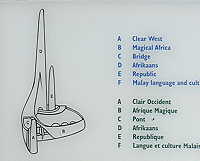
The monument above uses columns to indicate the relative numbers of users of different languages.
It's rather obvious that Afrikaans comes out on top: The country is still mainly owned and ruled by boer-stock. It was funny to us - they look so Dutch!
But not only the whites - a lot of Afro-Africans, to really coin a phrase, use it.
Having said all that, I'm not sure if I really like this monument and what it stands for. It strongly reminded me of le Corbusier's justly famous Ronchamps chapel, and not only in its sober austerity, the whole thing smacks of a patriotic 'we're the best'; which is of course denied on the plaque reproduced below. It's obviously a strong reaction to the English language threatening to take over.
That doesn't stop me from admiring the monument as a work of art, though. Its very location is marvelous.
It was designed by architect Jan van Wijk and unveiled by premier Vorster in 1975.
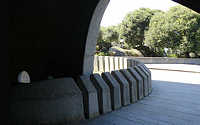
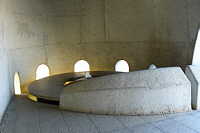
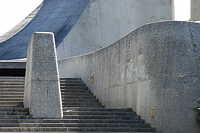
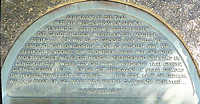
When I was a kid, this song was still very popular with the Dutch
who, naturally, sympathized with the boeren in their fight against the British.
| Bobbejaan beklim die berg so lustig en so rustig [bis] Bobbejaan beklim die berg om die rooinek te verslaan hoera voor die bobbejaan En je moe nie huil nie en je moe nie treur nie want die sterke bosse kerel kom weer |
The baboon climbs up the mountain so lustily and easily [bis] The baboon climbs up the mountain to go beat the rednecks hurray for the baboon And you shouldn't weep and you shouldn't cry 'cause those strong fine fellows will return |
a troop of baboons effortlessly climbing a steep mountain
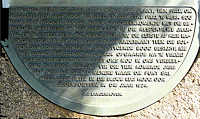
SEARCH this site or the Web

/* Disable right click script II (on images)- By Dynamicdrive.com For full source, Terms of service, and 100s DTHML scripts Visit http://www.dynamicdrive.com */ var clickmessage="Right click disabled on images!" function disableclick(e) { if (document.all) { if (event.button==2||event.button==3) { if (event.srcElement.tagName=="IMG"){ alert(clickmessage); return false; } } } else if (document.layers) { if (e.which == 3) { alert(clickmessage); return false; } } else if (document.getElementById){ if (e.which==3&&e.target.tagName=="IMG"){ alert(clickmessage) return false } } } function associateimages(){ for(i=0;i
all rights reserved